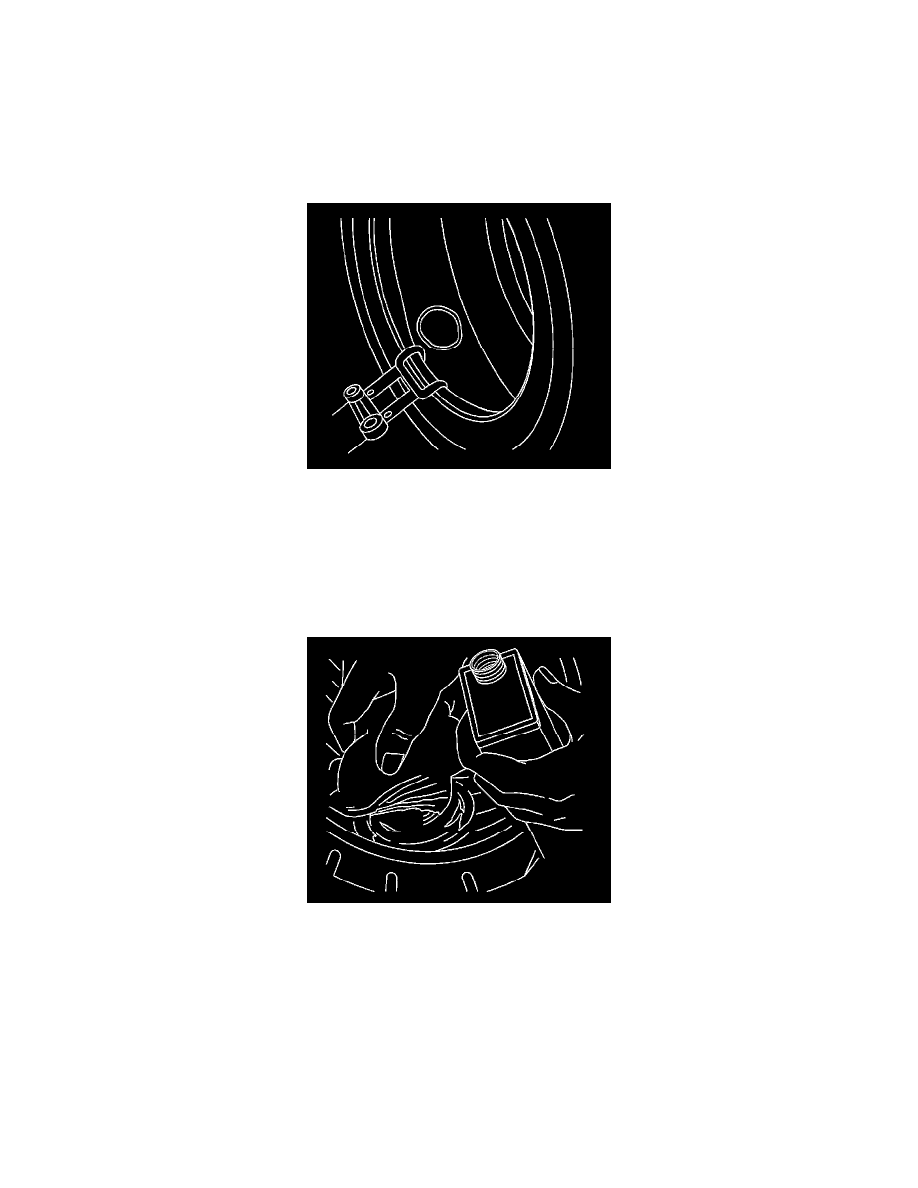Park Avenue V6-3.8L SC VIN 1 (2005)

2. Fill the injury (puncture) to keep moisture out.
3. Seal the inner liner with a repair unit to prevent air loss.
External Inspection
1. Prior to demounting, inspect the tire surface, the valve and the wheel for the source of the leak by using a water and soap solution. Mark the
injured area and totally deflate the tire by removing the valve core.
2. Demount the tire from the wheel and place the tire on a well-lighted spreader.
Internal Inspection
1. Spread the beads and mark the puncture with a tire crayon.
2. Inspect the inner tire for any signs of internal damage.
3. Remove the puncturing object, noting the direction of the penetration.
4. Probe the injury with a blunt awl in order to determine the extent and direction of the injury.
5. Remove any loose foreign material from the injury.
6. Punctures exceeding 6.35 mm (1/4") should not be repaired.
Cleaning
1. Clean the area around the puncture thoroughly with a proper liner cleaner, clean cloth and a scraper. This step serves to remove dirt and mold
lubricants to insure proper adhesion and non-contamination of the buffing tool.
2. Refer to information on the product or manufacturer's Material Safety Data Sheet and follow guidelines for handling and disposal.
Clean the Injury Channel
